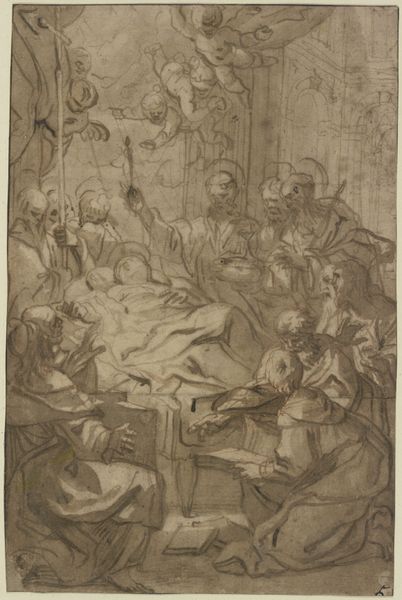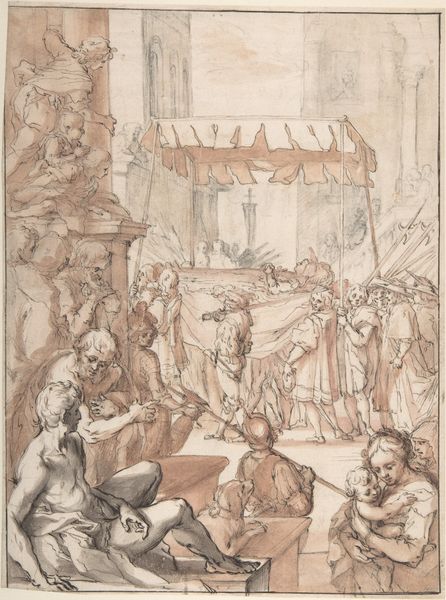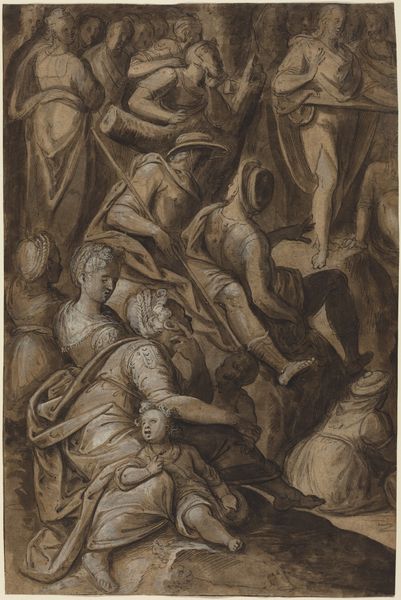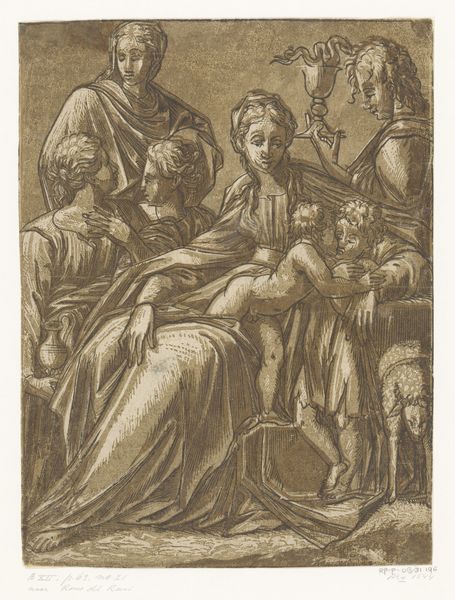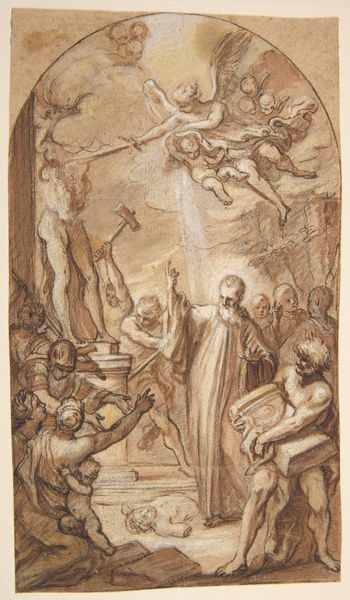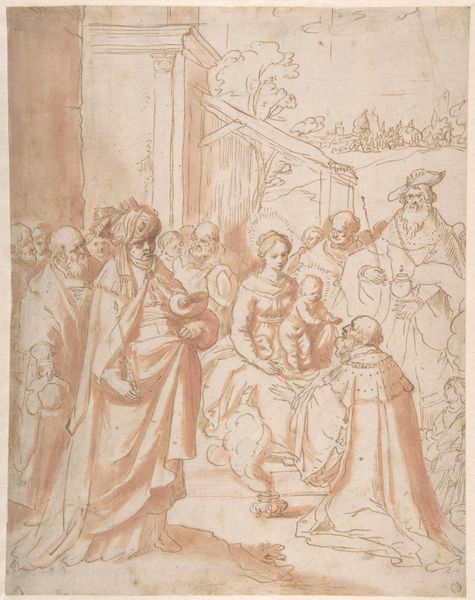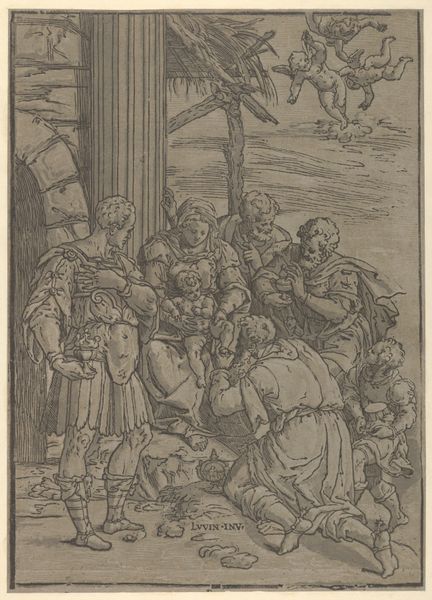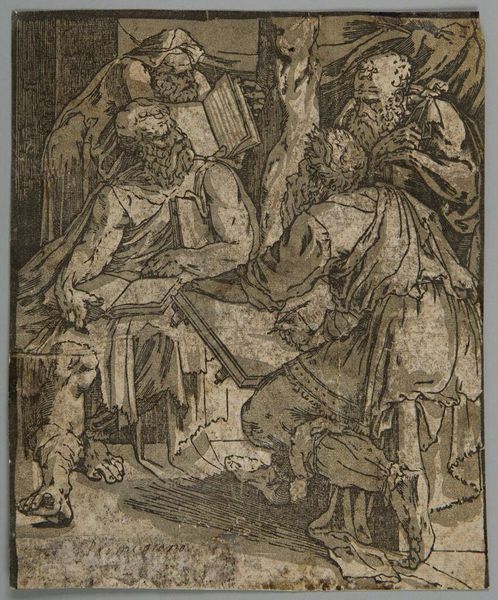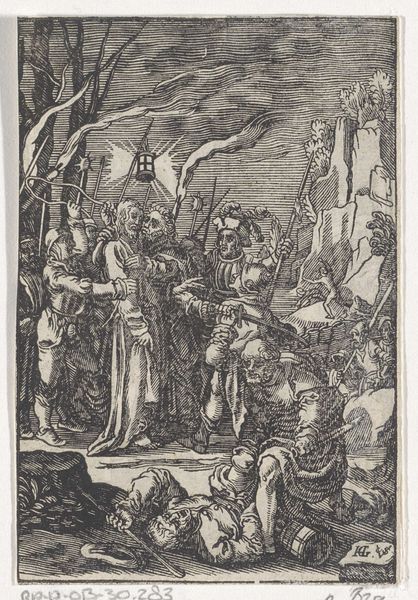
drawing, print, charcoal
#
drawing
#
narrative-art
# print
#
charcoal drawing
#
figuration
#
11_renaissance
#
oil painting
#
charcoal
#
italian-renaissance
Dimensions: sheet: 6 15/16 x 4 5/8 in. (17.6 x 11.7 cm)
Copyright: Public Domain
Editor: Here we have Hans Mielich’s "The Circumcision," which dates roughly from 1516 to 1573. It’s a drawing rendered in charcoal and print. The scene is crowded and intense, and honestly, a bit unsettling. What can you tell me about what's happening here, and how it fits into the art of the Renaissance? Curator: The intensity you perceive is key. The Renaissance wasn’t just about aesthetic beauty; it was also a period grappling with questions of identity, power, and the body. Consider circumcision itself— a ritual act deeply tied to religious and cultural identity, particularly for Jewish people in a Christian-dominated society. What tensions might arise from depicting such a scene? Editor: Well, I suppose the act itself, a physical marking, becomes a visual statement about belonging, or maybe *not* belonging. Curator: Precisely. Mielich's choice to depict it, especially with this level of graphic detail and emotional fervor, is far from neutral. Who is centered, and who is marginalized? Think about how artistic patronage also shapes these representations, especially in relation to faith. Do you see ways in which Mielich navigates these dynamics visually? Editor: The figures seem almost theatrical, with dramatic gestures. Is that a way to perhaps, create some distance or maybe even express discomfort with the subject matter? Curator: Possibly. Renaissance artists were increasingly aware of their role in constructing narratives, both religious and secular. But it’s also worth considering the intended audience. Would a Jewish or Christian viewer in the 16th century have interpreted this scene differently? Editor: Absolutely. It’s a stark reminder of how much context shapes our understanding. I wouldn't have thought about identity politics at play in religious art of that era! Curator: Art is never created in a vacuum. Exploring these layers—gender, faith, power—gives us a much richer, more complex understanding of not only the art but also the world in which it was made.
Comments
No comments
Be the first to comment and join the conversation on the ultimate creative platform.
